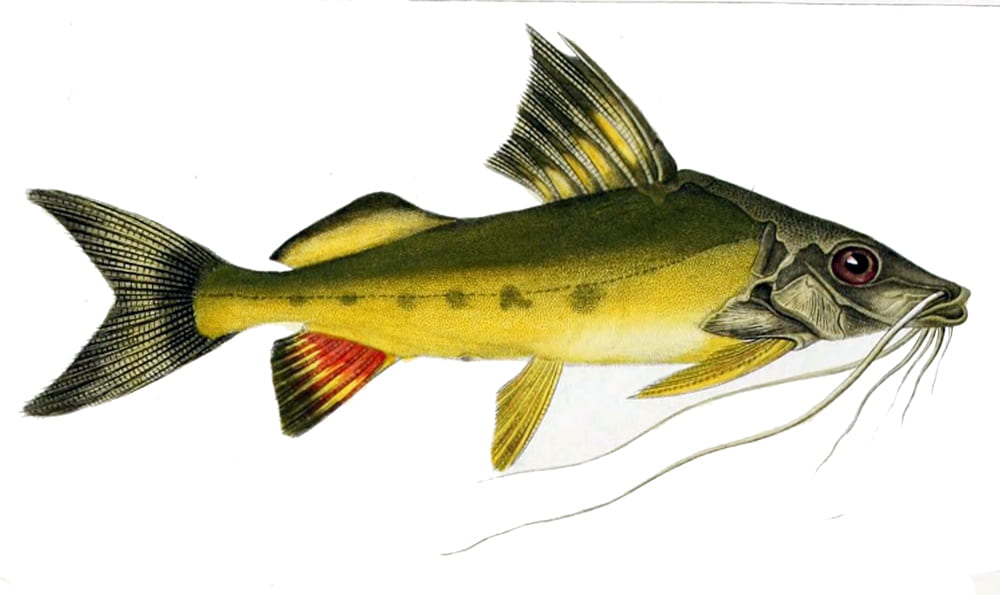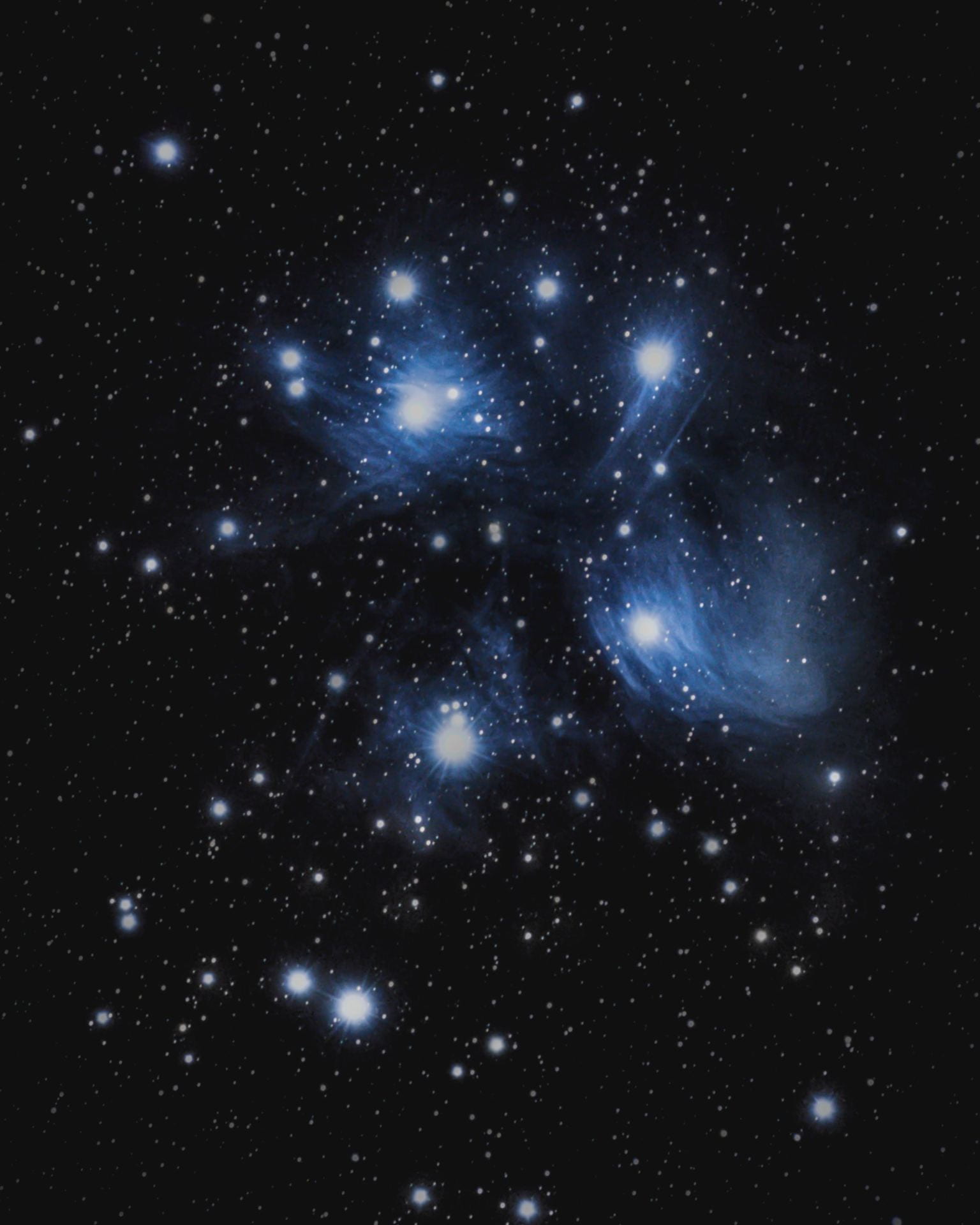“Legend of the Seven Stars”
Culture: Guiana Caribs | Narrator: Unidentified | Source: Roth (1915:262)
Entry by Michelle Scalise Sugiyama
Story
A man having lustful inclination toward his brother’s wife killed his brother while hunting in his company, and cutting off an arm of the murdered man, presented it to the widow as a proof of her husband’s death. He then took her as his own wife. But the spirit of the murdered man haunted a tree near by his brother’s house, and filled the air at nights with the laments, so that the widow, discovering the treachery of her new husband, became disconsolate. The fratricide, from vexation, decided to rid himself of her, and of her little child. For this purpose he took her ostensibly to hunt with him, and observing a hole at the root of a large tree, he desired her to stoop and search therein for a suspected acouri. While she looked in, he pushed her in completely, and also her child after her, and then stopped up the hole. On that night the spirit of the murdered man appeared to his brother and informed him that he knew of his deed of violence, and was not angry; for his wife had been transformed into an acouri, and his child to an adourie, so that his unnatural malice, save by the infliction of death, could not any more affect them. For himself, he would not cease to render the murderer’s life miserable so long as his own mangled body remained unburied. But if the wicked brother would disembowel the body and scatter the entrails, after interring the other remains, not only would the dead cease to be a terror, but at that season of every year an abundance of fish would gather in the river. The wretched brother then went to the place of the bloody deed, and did what he was told, when the scattered entrails of the murdered man floated upward to the skies, and assumed the appearance of the Seven Stars. And truly, as was predicted, on the annual appearance of those stars, the yarumak [Pimelodus maculatus], tibicurie [Prochilodus rubro-teniatus], caburessi [Chalccus teniatus], and several other excellent fishes are abundant in the rivers.
Traditional Ecological Knowledge
Zoology
This story provides information about the habitat of two terrestrial species, the acouri and the adourie. This is seen when the man instructs the woman to search for an acouri inside a hole at the root of a large tree, then pushes her in along with her daughter. Their subsequent transformation into an acouri and adourie, respectively, indicates that these species are denning animals that make their homes in forests at the base of trees. The fact that the woman has only one child may reference acouri and/or adourie litter size. The story also appears to reference a hunting technique: burrowing animals are sometimes killed by blocking the exits to their den and spearing or digging them out from above.
The story also notes that several fish species become available when the Pleiades reappear in the night sky. This tells us that, in contrast to the acouri and adourie, these species are only available for part of the year. It also identifies the season (Pleiades), quantity (abundant), and habitat (rivers) in which they are available. This information, along with the observation that these fish appear every year, points to an ecological cue that can be used to predict their impending availability: the return of the Pleiades. The story’s association of mother/daughter and acouri/adourie with the appearance of these fish suggests that there is a relationship between them: it may be that the arrival of the fish coincides with the time of year when acouri and adourie give birth.
Black agouti (Dasyprocta fuliginosa) | Photo by Haplochromis
Central American agouti (D. punctata) | Photo by Geoff Gallice
Pimelodus maculatus | Image by Paul Louis Oudart
Pleiades | Photo by Donnie Ray Crisp on Unsplash
Astronomy
This story indicates that the Pleiades can be used to predict the arrival of an annual bonanza of fish resources. In so doing, it implies that there is a correlation between seasonal changes on earth and periodic changes in the positions of celestial objects. This leads to the inference that asterisms can be used to predict the availability of seasonal resources. The characterization of the Pleiades as transformed entrails provides a rough description of this constellation, and a vivid mnemonic for remembering it.
Cultural Geography
This story references rules for proper disposal of a person’s remains. The murdered man is angry because his body has not been treated with respect: before burial, the entrails must be removed and scattered. The story implies that people who do not follow these rules will be plagued by the spirit of the deceased.
Rio Negro | Photo by Travis Reitter
The Land and The People
The term “Guiana” (or “Guyana”) refers to a geographic region in northern South America rather than a specific people. Bordered by the Rio Negro, Orinoco, and Amazon rivers, Guiana is a melting pot: prior to European contact in the late fifteenth century, migration and intermingling among Arawak, Carib, and other Indigenous peoples had produced a cosmopolitan culture. Early ethnographic research on Guiana thus tends to treat it as a cultural whole. Roth acquired this story from the Akawaio (also known as the Waika, Ingariko, and Kapon), whose language is a member of the Cariban family. In the nineteenth century, their main settlements were situated along the Cuyuni, Barama, Barima, and upper Pomeroon Rivers, in the densely forested interior of the region. While some groups in Guiana practiced horticulture, Akawaio economy was based on hunting, gathering, and fishing.
Among the Carib peoples, the year is divided into seasons that correspond to periods in which important plant or animal resources return, ripen, or reproduce. The beginning or end of each season, in turn, is associated with the appearance or disappearance, rising or setting, and/or position of specific asterisms, for which the seasons are named. Through this association, asterisms are used to anticipate the periods for hunting and gathering seasonal resources. For example, the Carib of the upper reaches of the Pomeroon and Moruca Rivers could predict “exactly when to come down to the coast for the crab season, striking it certainly within 24 hours of the time when the crabs begin to march” (Roth 1924:717).
For predictive purposes, heliacal risings were often used. The heliacal rising of a star or asterism occurs annually, when it becomes visible above the eastern horizon just before sunrise after a period of absence. The heliacal rising of the Pleiades was used to predict the onset of the rainy season and to mark the beginning of a new year. Evidence of the importance of asterisms in Carib meteorology is seen in the practice of reciting the constellations in the order of their heliacal rising, beginning with the Pleiades. This constellation was also one of the string figures made by Guiana children.
Pleiades | Photo by Bryan Goff on Unsplash
Kaieteur Falls, Guiana in rainy season | Photo by Sorenriise
“myths . . . encode astronomical information—and particularly so in cultures relying on the oral transmission of knowledge.”
—Magaña (2005:244)
Agouti | Photo by brian.gratwicke
Awara palm (Astrocaryum vulgare) | Photo by Rayflexcom
Green acouchi (Myoprocta pratti) | Photo by Brian.gratwicke
The main rainy season in Guiana lasts from mid-November to mid-February. Anticipating this season is important due to its effects on plant and animal life. The acouri and adourie are a case in point. Both are agouti (Dasyprocta) species, a rodent genus native to the rainforests, scrub forests, brush, and savannas of Central and South America. Diurnal frugivores, they are typically found near water, especially along the banks of streams, rivers, and lakes, and make their dens under tree roots, in hollow logs or tree trunks, or among limestone boulders. Although several agouti species can breed year-round, they tend to give birth during the season when fruit is most plentiful, between March and July, with litters typically consisting of one or two young. They are particularly fond of the fruit of the awara palm (Astrocaryum vulgare), which is also used by humans to make an oil.
Tellingly, this relationship is referenced in a constellation that rises in mid-December: “the constellation of the acuti [agouti] and of the acuchi [acouchi] is two stars under a palm (the awara palm constellation)” (Magaña 1996:248). Like agoutis, acouchis are frugivorous members of the Dasyproctidae family, and occupy similar habitat. All are extensively hunted.
“This correlation of star with animal or plant was . . . the way of prophesying when and where game might be hunted with success.”
—Roth (1924:716)
In this land of rivers, aquatic resources are important in the diet as well. A wide range of fish species are taken. The first species mentioned in the story, Pimelodus maculatus, is a member of the Pimelodidae or long-whiskered catfish family, which is native to South America. Prochilodus is a genus of freshwater fish found in the river basins of Amazonia, Guiana, Colombia, Venezuela, Paraguay, and northeastern Argentina. The Carib people traditionally used a wide range of fishing methods. Frugivorous species were lured using fruit or seeds. For example, when water visibility was poor, the fruit of the lana (Genipa americana) was placed in a basket and allowed to float with the current; fish were shot with bow and arrow as they rose to the bait.
Red acouchi (Myoprocta acouchy) | Photo by Alejandro Bayer Tamayo
Funeral customs varied from group to group. The levirate was practiced but not mandatory: after a period of mourning, a widow might marry her late husband’s brother, or she might marry elsewhere. Exhumation was common, followed either by cremation or distribution of the bones among the bereaved. It was customary to bewail the deceased every morning, usually until the final mortuary rites, but sometimes longer. The woman in the story is thus upholding this tradition. Widows and widowers were expected to postpone remarriage until all funerary ceremonies were concluded. Thus, by marrying his sister-in-law before burying his brother, the man in the story has violated this rule. His acts of fratricide and wife-poaching would have been seen as private matters: redress in such cases was considered the business and responsibility of the injured parties and/or their kin.
Map
Guiana is a region in northern South America that spans several countries, and is bordered by the Rio Negro, Orinoco, and Amazon rivers.
References
Decker, J. (2000). “Dasyprocta punctata.” (On-line), Animal Diversity Web. Accessed December 2020 at https://animaldiversity.org/accounts/Dasyprocta_punctata/.
Jaimes, M. (2007). “Myoprocta acouchy.” (On-line), Animal Diversity Web. Accessed December 2020 at https://animaldiversity.org/accounts/Myoprocta_acouchy/.
Magaña, E. (1984). Carib tribal astronomy. Social Science Information, 23(2), 341-368.
Magaña, E. (1996). Tropical tribal astronomy: Ethnohistorical and ethnographic notes. In V. Chamberlain, J. Carlson, & M. Young (Eds.), Songs from the Sky. College Park, MD: Ocarina Books, 244-263.
Roth, W. (1915). An inquiry into the animism and folk-lore of the Guiana Indians. Annual Report of the Bureau of American Ethnology, Vol. 30. Washington, D. C.: Government Printing Office.
Roth, W. (1924). An introductory study of the arts, crafts, and customs of the Guiana Indians. Annual Report of the Bureau of American Ethnology, Vol. 38. Washington, D. C.: Government Printing Office.
Svendsen, J. (2001). “Dasyprocta fulginosa.” (On-line), Animal Diversity Web. Accessed December 2020 at https://animaldiversity.org/Dasyprocta_fulginosa/.
















